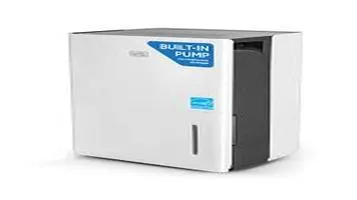Review about Window Sensors
Window sensors are essential components in modern security systems, designed to detect unauthorized entry through windows. These compact devices are typically installed on window frames and operate using magnetic or contact-based mechanisms. When a window is opened, the sensor detects the break in contact and triggers an alert. This alert can be sent directly to a security system, smartphone, or monitoring service, ensuring immediate notification of potential breaches. Window sensors are easy to install and offer a cost-effective solution for enhancing home or office security. They often integrate seamlessly with smart home systems, enabling remote monitoring and automation. In addition to security, some sensors also monitor environmental conditions, such as temperature and humidity, adding another layer of utility to their functionality.

Features and Types of Window Sensors
Window sensors typically come in two primary types: contact sensors and glass break sensors.
Contact Sensors: These are the most common type of window sensors. They consist of two parts: a magnet and a sensor, which are installed on the window frame and the window itself. When the window is closed, the magnet and sensor create a closed circuit. If the window is opened, the circuit is broken, triggering an alarm. Contact sensors are reliable and straightforward, making them a popular choice.
Glass Break Sensors: These sensors are designed to detect the sound of breaking glass. They use a microphone and a processor to pick up the specific frequency and pattern of breaking glass. When the sensor detects this sound, it triggers an alarm. Glass break sensors are particularly useful for larger windows or sliding glass doors, where contact sensors might not be as effective.
Installation and Usability
One of the significant advantages of window sensors is their ease of installation. Most contact sensors are wireless and come with adhesive backing, allowing homeowners to install them without professional help. Simply place the sensor and magnet on the window and frame, ensuring they are aligned correctly. For glass break sensors, installation is typically just as easy; they can be mounted on walls or ceilings near the window.
The usability of window sensors is generally high. They are often part of a larger home security system and can be monitored and controlled via a smartphone app. This integration allows homeowners to receive real-time alerts and notifications if a sensor is triggered. Many modern window sensors also come with tamper detection, alerting homeowners if someone tries to remove or disable the sensor.
Effectiveness
Window sensors are highly effective in deterring and detecting unauthorized entry. The presence of window sensors alone can act as a deterrent to potential intruders, who may look for easier targets. Contact sensors are particularly effective because they immediately trigger an alarm when a window is opened, providing instant notification to homeowners and potentially scaring off intruders.
Glass break sensors add an additional layer of security by detecting forced entry through breaking glass. They are especially useful in areas where windows are more vulnerable or in homes with large glass surfaces. However, it’s worth noting that glass break sensors can sometimes produce false alarms, triggered by loud noises that mimic the sound of breaking glass.
Integration with Home Security Systems
Modern window sensors are designed to integrate seamlessly with broader home security systems. This integration enhances their effectiveness and usability. For instance, when connected to a central security system, window sensors can trigger not only local alarms but also alerts to a monitoring center, which can dispatch emergency services if necessary.
Smart home integration is another significant advantage. Many window sensors are compatible with smart home ecosystems like Amazon Alexa, Google Home, and Apple HomeKit. This compatibility allows homeowners to control and monitor their window sensors using voice commands and automate responses based on sensor activity.
Cost and Value
The cost of window sensors varies depending on the brand, type, and features. Basic contact sensors are relatively inexpensive, often costing between $20 and $50 per sensor. Glass break sensors are typically more expensive, ranging from $50 to $100 per sensor. While the initial investment might seem significant, the added security and peace of mind they provide are well worth the cost.
Moreover, many home insurance companies offer discounts for homes equipped with security systems, including window sensors. This potential for savings can offset the initial investment over time.
Conclusion
In conclusion, window sensors are a valuable addition to any home security system. They offer a straightforward and effective way to monitor and protect windows, which are common points of entry for intruders. With easy installation, high usability, and seamless integration with modern home security and smart home systems, window sensors provide excellent value for their cost.
While contact sensors are reliable and effective for detecting window openings, glass break sensors offer an additional layer of protection against forced entry. The combination of both types ensures comprehensive coverage and enhances the overall security of your home.
For homeowners looking to bolster their security measures, investing in quality window sensors is a prudent decision. They not only improve safety but also contribute to peace of mind, knowing that your home is better protected against potential threats.






